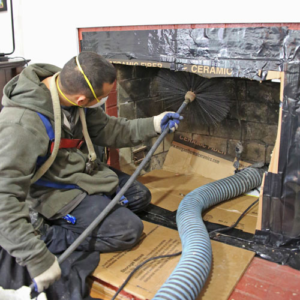Truck accident cases are different from car accidents. They involve more than just one truck driver – often, a whole company is liable through the law of vicarious liability.
Trucking companies and their insurance carriers do everything they can to avoid liability. To level the playing field, you need an experienced personal injury lawyer with the resources to fight. Contact Baltimore Trucking Accident Lawyer now!

Whether from traffic cameras, business security systems, or the victim’s phone, surveillance footage is often key to establishing facts and proving negligence in truck accidents. Your lawyer will work with expert surveillance experts to obtain and analyze this evidence.
Witness statements, medical bills, repair estimates, and photos or videos of the accident scene are all essential pieces of evidence to a successful claim for damages. Your attorney will also work with expert witnesses to recreate the accident and testify as needed.
Trucking companies may try to destroy or tamper with evidence to avoid liability, but an experienced attorney will know how to detect and stop these tactics. Your lawyer will start by sending the trucking company a “spoliation letter,” which makes clear that they are required to preserve all relevant records and inspections. The trucking company that tampers with or destroys any of this evidence could be held liable for your injuries.
Other types of important evidence might include the truck driver’s employment and driving history, which can reveal previous accidents or safety violations. Hours of service logs, which electronically record the amount of time a trucker spends on duty and behind the wheel, can help prove that the crash occurred due to drowsy or fatigued driving. Your lawyer will also work with forensic computer analysts to review the truck driver’s hours-of-service logs and their metadata to see if any suspicious changes were made to them.
Detailed vehicle maintenance records and an analysis of the truck’s cargo can reveal mechanical defects or improper loading that contributed to the accident. Weather conditions and road conditions, including sudden or dangerous changes, are another important factor that can cause truck accidents. Your lawyer will collect this data from the involved vehicles and the road.
A thorough investigation of the accident can also uncover evidence about the at-fault party’s financial losses. Your lawyer will evaluate your medical bills, lost wages, property damage, and other tangible losses, and will use this information to draft a demand letter for compensation. The demand letter is sent to the at-fault party or their insurance carrier, and it sets out the full amount of your damages.
Negotiating with Insurance Companies
When truck crashes happen, they can be much more severe than car accidents. This is because trucks have more weight, which can cause greater damage and a higher likelihood of serious injury for crash victims. As such, it is important to consult with a trucking accident lawyer for legal advice before accepting any settlement offer from the insurance company. They can help you determine how much compensation you deserve for your injuries and losses, which can include medical expenses, lost wages, property damage, and pain and suffering.
When negotiating with the insurance company, your trucking accident attorney will fight to ensure that they pay you what you are owed. They will begin by reviewing your case to identify all of the liable parties and their insurance coverage. They will then calculate your accident-related damages and submit a demand letter to the insurance provider. They will make sure that they take into account all of your current and future losses and associated costs, including the emotional and psychological toll the accident has taken on you.
If the insurance company refuses to agree to a fair settlement, your trucking accident lawyer will file a personal injury lawsuit in civil court on your behalf. This is done to hold the insurance company and the truck driver accountable for their negligence. In many cases, this will be enough to entice the insurance company to return to the negotiating table and agree to a fair settlement amount for your claim.
While it may be tempting to accept the first settlement offer from the insurance company, doing so can significantly reduce the amount of money you receive in your final settlement. This is because the insurance company will often lowball initial offers to save on their expenses and close your case quickly. However, if you consult with a trucking accident lawyer and they believe that the insurance company is being unreasonable, they will be able to negotiate with them to try to get a better offer for you.
Another way that trucking companies try to reduce their payouts is by claiming that your injuries are not as severe as you claim. This is a common tactic that can be difficult to dispute. However, your lawyer can use a medical evaluation to show that your injuries are as severe as you say. They can also point out any special circumstances that may increase your award for pain and suffering, such as ongoing chronic pain or severe emotional distress.
Taking the Case to Trial
Depending on the evidence collected, your attorney may file a lawsuit against the truck driver and trucking company or other parties at fault. This is an official document that identifies the plaintiff and defendant(s) and details the plaintiff’s allegations of negligence and wrongdoing. Once filed, the lawsuit begins the legal process of gathering even more evidence and filing motions with the court to preserve vital information that could be tampered with or lost (like data from the truck’s black box, logbooks, medical examination and certification records, vehicle inspection reports, and repair or maintenance records).
During this phase, your attorney will also conduct further interviews with witnesses to gather as much evidence as possible. He or she will also review the information from the accident report and determine the best course of action to move forward with your case. This might involve negotiating with the at-fault party’s representatives, which often takes more work than simply sending in a settlement demand. Your attorney will take the time to thoroughly evaluate your claim and know its full value, never settling for less than you deserve.
Suppose negotiations with the at-fault party’s insurance representatives are stalled or have reached a deadlock. In that case, your attorney will likely recommend taking the case to trial in order to secure additional compensation for your damages. A successful lawsuit can result in a substantial award of financial compensation for everything you have incurred, including medical bills, loss of income or employment opportunities, property damage, and disruptions to your life. In addition to economic damages, you might be entitled to punitive damages if the trucking company’s actions were egregious.
It is your attorney’s job to prove that the defendant(s) breached their duty of care and that their breach directly caused your injuries and other damages. To meet this burden, your lawyer must provide enough evidence to satisfy a legal standard called “preponderance of the evidence.”
Representing You
A skilled truck accident lawyer will review your case’s evidence, including police reports, medical records and witness statements. They will also consult with experts in the field to establish the extent of your injuries and the total cost of your damages. Then, they will negotiate with the insurance company on your behalf to secure the compensation you deserve for your medical bills, lost wages, pain and suffering, and other damages.
When choosing a New York Truck Injury Lawyer, it’s important to consider their experience and track record. You’ll want to find an attorney with substantial courtroom experience who can handle your case in front of a judge and jury if necessary. You should also discuss the lawyer’s fee structure to make sure it aligns with your budget and expectations.
Trucking accidents aren’t like ordinary auto crashes, which makes finding the responsible parties even more difficult. A good trucking accident lawyer will be able to analyze the crash to identify all of the liable parties and their relationships to each other. This process involves gathering evidence such as vehicle maintenance and repair logs, driver’s hours of service and medical records, accident reconstruction expert testimonies, witness statements, photographs, video footage, skid marks, and any other applicable information to determine what caused the crash.
In many cases, multiple defendants may be responsible for a truck crash, including the truck driver, trucking company, and others who may share responsibility through vicarious liability. A trucking accident lawyer will examine the evidence to determine which defendants are liable and pursue the compensation you deserve from each of them.
The next step is determining whether your case is best suited for settlement or trial. A skilled Manhattan truck accident attorney will be able to explain your options clearly and advise you on what is in your best interests. They will also be able to handle all communications with the involved parties, including insurance companies and medical providers to ensure that all documents reflect your true injuries and losses.
If you or a loved one has been injured in a truck accident, it’s critical to contact a qualified NYC Truck Accident Lawyer as soon as possible. With extensive experience handling personal injury claims involving commercial vehicles, a New York Trucking Accident Attorney can help you recover the maximum compensation for your injuries and other damages.

